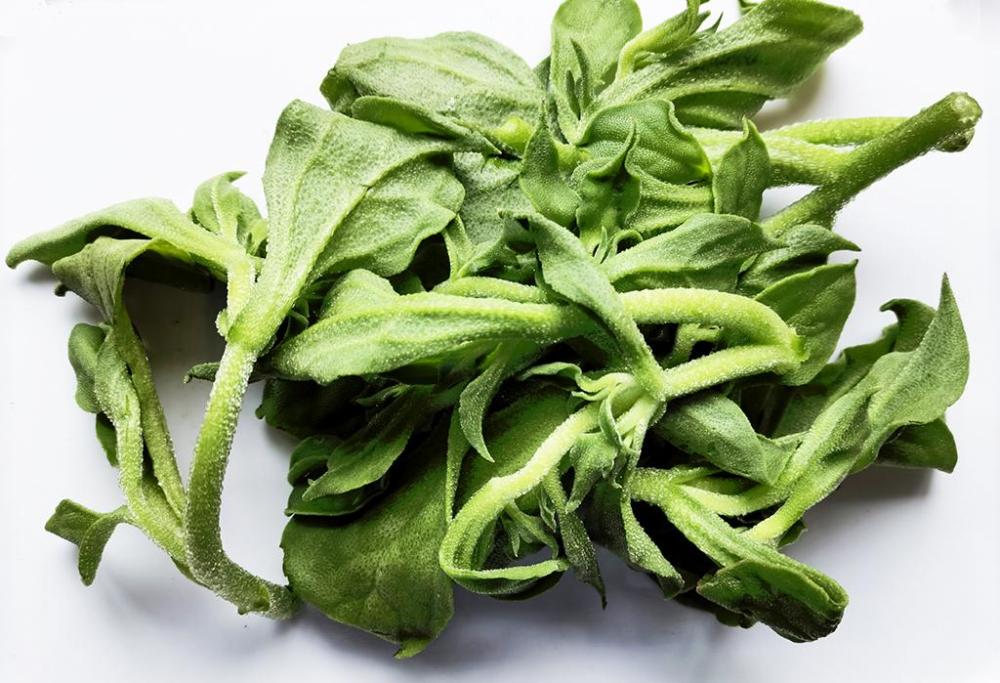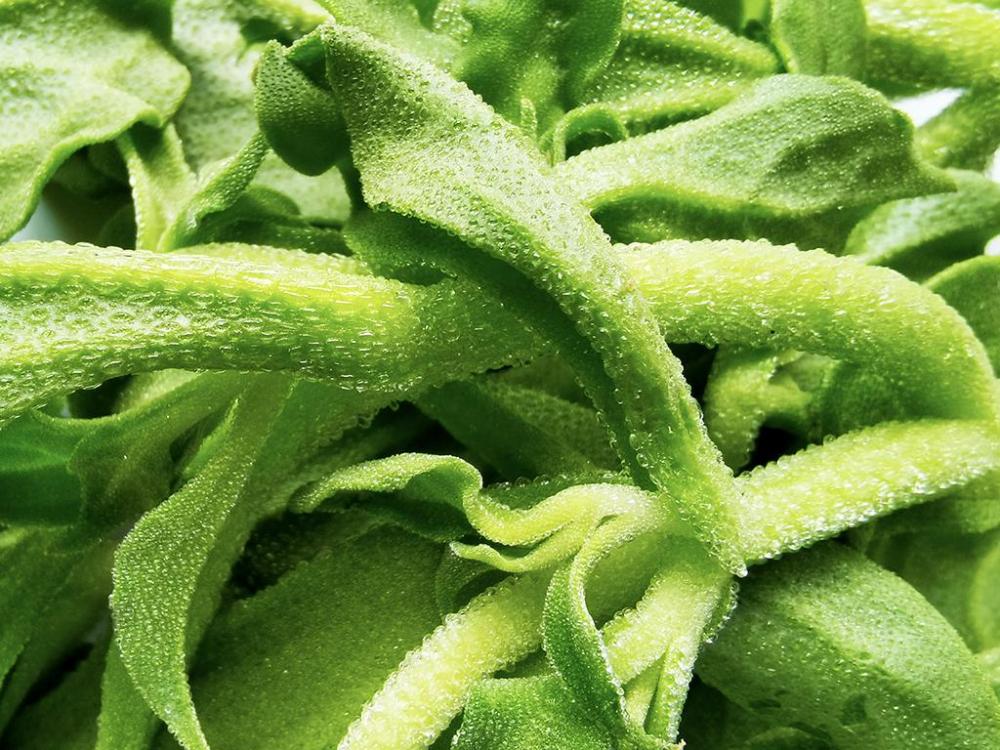Another new one (at least to here) turned up in the supermarket this morning.
南非冰草 (nán fēi bīng cǎo), literally 'South African Ice Grass', Mesembryanthemum crystallinum, is known in English as 'common ice plant', 'crystalline ice plant' or just plain 'ice plant'. Native to southern Africa and southern Europe, it is a succulent, now naturalised (sometimes invasively) in North and South America and Australia. It is a popular vegetable in Japan where it was first successfully cultivated on a commercial scale. Now it is grown in northern China, especially Shandong.
The ice name comes from the bladder cells or water vesicles resembling ice on the leaves and stems.
The leaves and stems (and seeds) are all edible. I'm guessing the locals here will just stir fry it. In its native South Africa, the leaves and stems are often pickled.
As to taste, it is slightly sweet, with a fresh herbal taste; the texture is pleasantly crisp. The plant has the ability to absorb salt, so be careful with seasoning.




